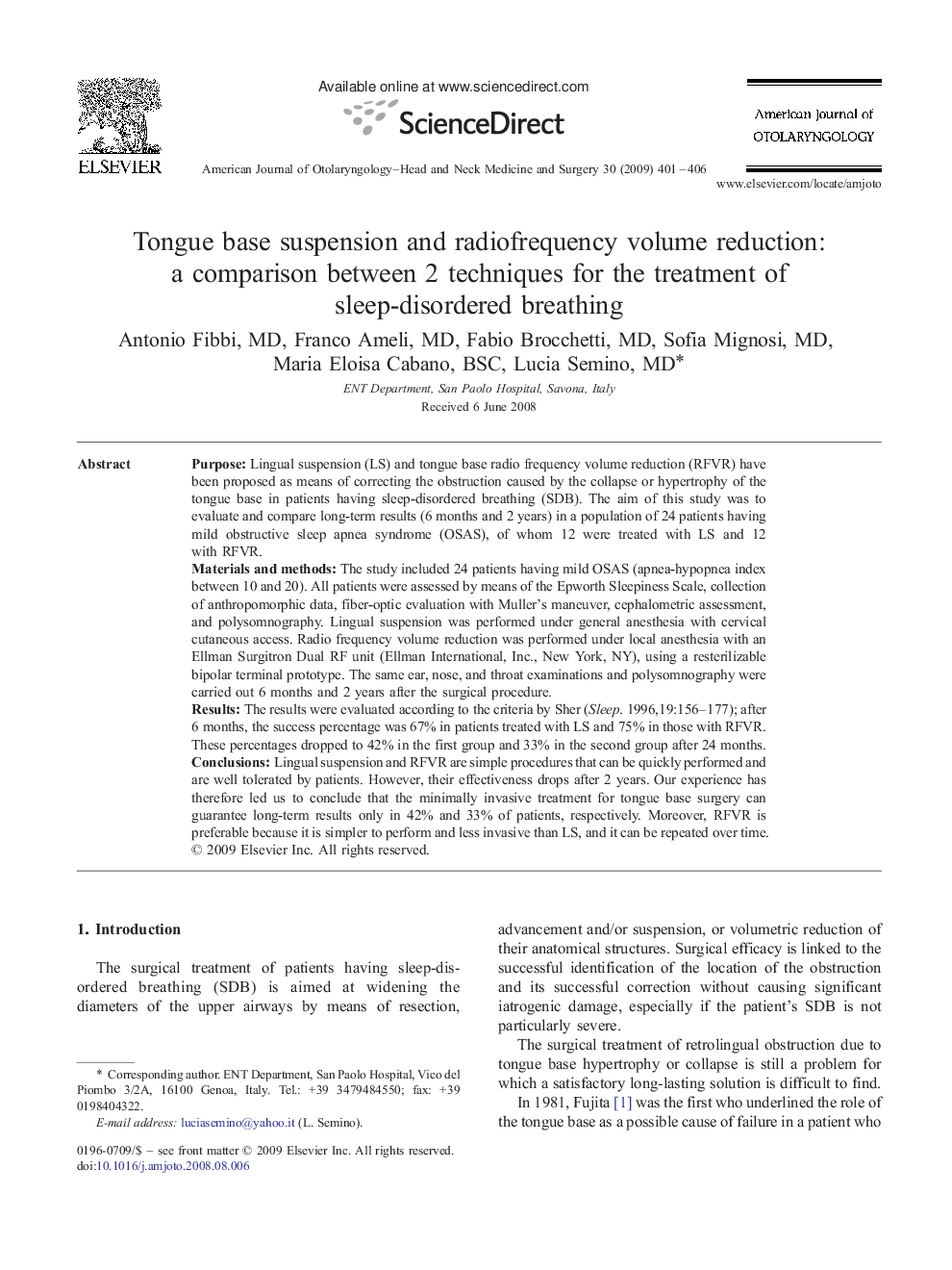| Article ID | Journal | Published Year | Pages | File Type |
|---|---|---|---|---|
| 4103843 | American Journal of Otolaryngology | 2009 | 6 Pages |
PurposeLingual suspension (LS) and tongue base radio frequency volume reduction (RFVR) have been proposed as means of correcting the obstruction caused by the collapse or hypertrophy of the tongue base in patients having sleep-disordered breathing (SDB). The aim of this study was to evaluate and compare long-term results (6 months and 2 years) in a population of 24 patients having mild obstructive sleep apnea syndrome (OSAS), of whom 12 were treated with LS and 12 with RFVR.Materials and methodsThe study included 24 patients having mild OSAS (apnea-hypopnea index between 10 and 20). All patients were assessed by means of the Epworth Sleepiness Scale, collection of anthropomorphic data, fiber-optic evaluation with Muller's maneuver, cephalometric assessment, and polysomnography. Lingual suspension was performed under general anesthesia with cervical cutaneous access. Radio frequency volume reduction was performed under local anesthesia with an Ellman Surgitron Dual RF unit (Ellman International, Inc., New York, NY), using a resterilizable bipolar terminal prototype. The same ear, nose, and throat examinations and polysomnography were carried out 6 months and 2 years after the surgical procedure.ResultsThe results were evaluated according to the criteria by Sher (Sleep. 1996,19:156–177); after 6 months, the success percentage was 67% in patients treated with LS and 75% in those with RFVR. These percentages dropped to 42% in the first group and 33% in the second group after 24 months.ConclusionsLingual suspension and RFVR are simple procedures that can be quickly performed and are well tolerated by patients. However, their effectiveness drops after 2 years. Our experience has therefore led us to conclude that the minimally invasive treatment for tongue base surgery can guarantee long-term results only in 42% and 33% of patients, respectively. Moreover, RFVR is preferable because it is simpler to perform and less invasive than LS, and it can be repeated over time.
